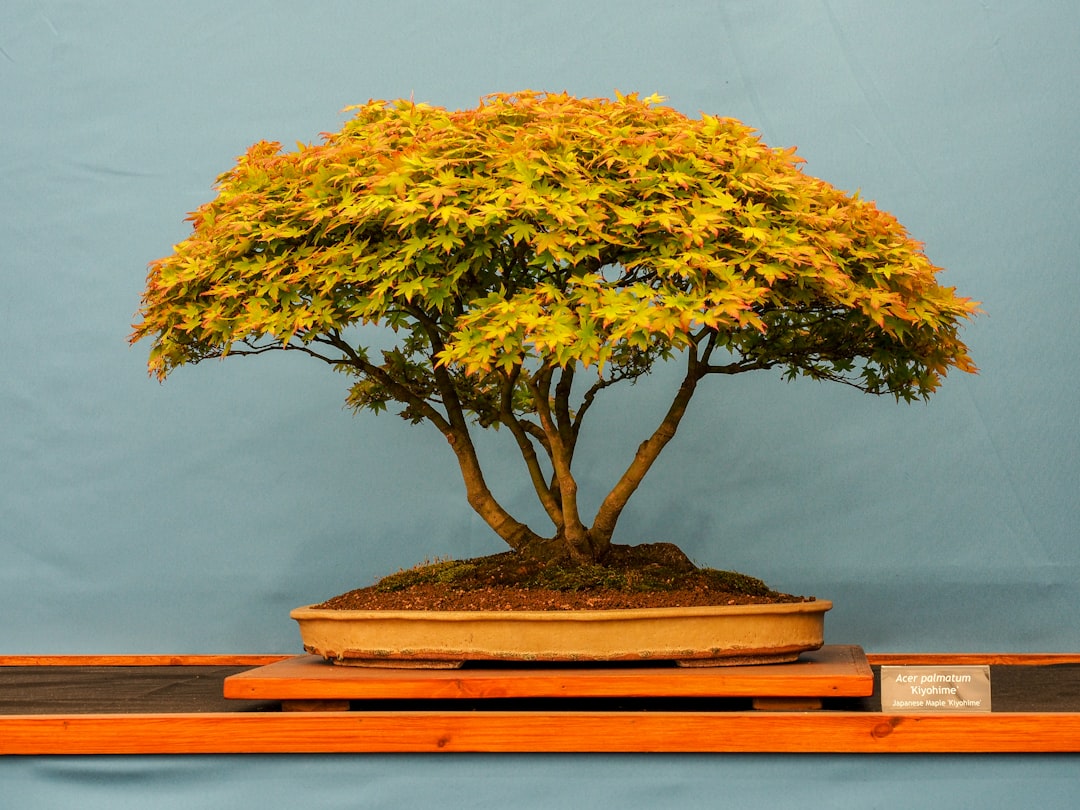Wiring is an essential technique in bonsai cultivation, allowing enthusiasts to shape branches and trunks into artistic, natural-looking forms. By carefully applying wire, you can guide growth, refine structure, and enhance the overall aesthetic of your bonsai tree. However, improper wiring can damage branches, stunt growth, or leave unsightly scars. In this guide, we’ll explore the different types of wire, best application methods, and essential tips for safe and effective wiring.
1. Why Wire a Bonsai Tree?
Wiring provides several benefits in bonsai training, including:
-
Shaping the tree’s structure: Encourages branches to grow in the desired direction.
-
Creating balance and harmony: Helps distribute foliage for a more natural look.
-
Enhancing artistic styles: Enables techniques like cascading, windswept, or literati styles.
-
Improving taper and movement: Guides trunk development for a more mature appearance.
When done correctly, wiring allows you to express the beauty of nature in a miniature form.
2. Choosing the Right Wire for Bonsai
Two types of wire are commonly used in bonsai wiring:
A. Aluminum Wire
-
Best for beginner-friendly species like junipers, elms, and ficus.
-
Easier to bend and adjust—ideal for deciduous and young trees.
-
Reusable after removal, making it cost-effective.
-
Available in various thicknesses, typically ranging from 1mm to 6mm.
B. Copper Wire
-
Preferred for conifers, such as pines and spruces, due to its strong holding power.
-
More rigid than aluminum, meaning thinner wire can be used.
-
Hardens after bending, making it excellent for long-term shaping.
-
Requires more experience, as it is less forgiving and can easily damage delicate branches.
Tip: If you're a beginner, start with aluminum wire before progressing to copper for more advanced styling.
3. When to Wire a Bonsai Tree
Timing is crucial when applying wire:
-
Spring and early summer: Best for deciduous trees, as they recover quickly.
-
Late autumn to winter: Ideal for conifers, as they are less active and retain shape better.
-
Avoid wiring during extreme weather (heat waves, freezing conditions) to prevent stress.
Wiring should typically stay on for 3–6 months, depending on the species and growth rate. Regularly check for signs of wire cutting into the bark, and remove it before it causes scarring.
4. How to Apply Bonsai Wire Correctly
Step 1: Select the Right Wire Thickness
-
Use wire that is one-third the thickness of the branch being shaped.
-
If extra support is needed, apply double wiring—wrapping two wires together for added strength.
Step 2: Anchor the Wire Properly
-
Always start by anchoring the wire firmly to the trunk or a thicker branch before moving outward.
-
For multiple branches, use one continuous wire when possible to create a stable framework.
Step 3: Wrap the Wire at the Correct Angle
-
Wrap wire at a 45-degree angle, like a spiral, to provide support without restricting growth.
-
Avoid wrapping too tightly, as this can damage the bark.
-
Maintain even spacing—gaps should be equal along the branch.
Step 4: Bend Branches Gently
-
Hold the branch with one hand for support while bending with the other to prevent snapping.
-
Apply slow, gradual pressure—forcing branches too quickly can cause breakage.
-
If a branch resists movement, stop and rewire with thicker wire for better control.
Step 5: Monitor and Remove Wire on Time
-
Check your bonsai every few weeks to prevent wire from cutting into the bark.
-
If the branch holds its new shape, carefully cut the wire with wire cutters instead of unwinding it to avoid damage.
5. Wiring Techniques for Different Bonsai Styles
Different bonsai styles require different wiring strategies:
Formal Upright (Chokkan)
-
Use wiring to create a balanced, symmetrical structure with well-spaced branches.
-
Guide lower branches outward while keeping upper branches slightly upward.
Informal Upright (Moyogi)
-
Apply wire to enhance natural movement and gentle curves in the trunk.
-
Bend branches asymmetrically for a more organic appearance.
Cascade (Kengai) and Semi-Cascade (Han-Kengai)
-
Wire the trunk downward to create the cascading effect.
-
Support hanging branches with heavier gauge wire to prevent breaking.
Windswept (Fukinagashi)
-
Train all branches in one direction to mimic strong wind exposure.
-
Use multiple wires to reinforce the dynamic, flowing structure.
6. Common Wiring Mistakes to Avoid
-
Using wire that is too thin – Won't hold shape and may need reapplication.
-
Wrapping too tightly – Can cut into the bark, leaving scars.
-
Leaving wire on too long – May cause permanent damage to the tree.
-
Overbending branches too quickly – Can snap delicate limbs.
-
Wiring during peak growth – Can lead to excessive stress and poor recovery.
By avoiding these mistakes and applying proper wiring techniques, you can safely shape your bonsai into a beautiful and refined miniature tree.
Final Thoughts
Bonsai wiring is an artful technique that requires patience, precision, and practice. When done correctly, it allows you to mold your tree into an elegant form while maintaining its health. Whether you’re guiding the movement of a young sapling or refining an aged tree, mastering the art of wiring will bring you one step closer to creating a breathtaking bonsai masterpiece.
Have you tried wiring your bonsai? Share your experiences and tips in the comments!

Comments
No comments yet. Be the first to comment!
You must be logged in to comment. Login